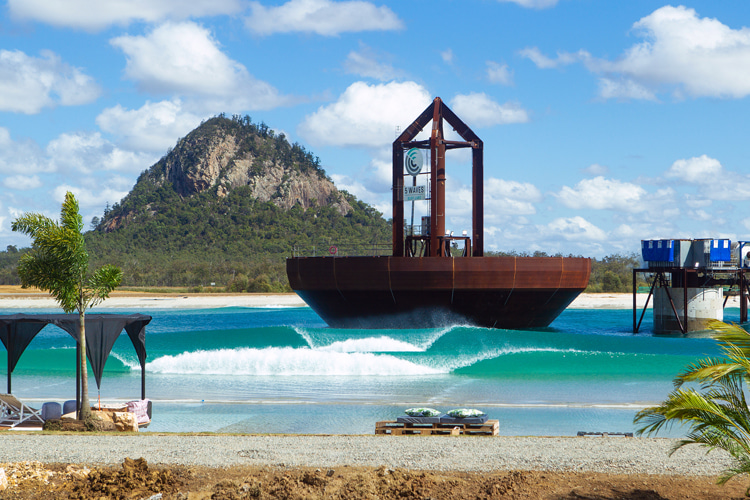Wave pools are modern marvels of technology and engineering, recreating the ocean's dynamic and rhythmic waves in a controlled environment.
These pools are essentially sanitized, regimented revisions of the wild, organic surf created by nature, where the water is chlorinated, the beach is concrete, and the waves arrive like clockwork once every few minutes.
In the ocean, waves are created by the wind.
The wind pushes some water molecules together, producing a swell of water - a disturbance in the ocean's surface - at a point.
This disturbance is then passed along the ocean's surface while the individual water molecules stay in roughly the same area.
This natural wave action can be replicated in several ways, such as using a strong blast of air along the surface, a rotating paddle wheel, an oscillating plunger, and other formulas.
Actually, man-made surf lagoons have been here since the 19th century.
Basically, you push on the water at one point, and this energy travels outward through the surrounding water.
In our quest to harness nature for entertainment, wave pool technologies have demonstrated the audacious extent of human ingenuity.
This drive has resulted in six diverse yet equally impressive methods of creating artificial waves, turning surfing into a year-round, globally accessible sport.
In general, in a surf session at a wave pool with a small number of participants, you can catch more waves than in a session with a full house.
On average, you might get 9-10 waves in an hour, but with fewer people, you could get up to 15.
Therefore, timing your sessions for off-peak hours can offer more opportunities for surfing.
But before paddling out in chlorinated water, let's look at the leading wave pool technologies.
1. Piston-Powered Paddles | Wavegarden
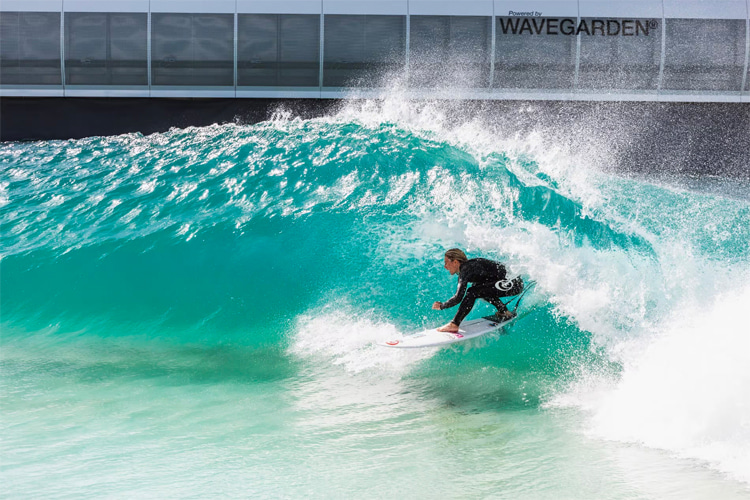
Wavegarden, a company based in Spain, is renowned for using piston-powered paddle technology.
The mechanism, located centrally in the pool, uses a sizeable, hinged flap to displace water, forming a wave that radiates outwards on either side.
The size and frequency of the waves can be modified, allowing for different surfing experiences.
The "Cove" technology by Wavegarden further refines this concept.
It involves an array of small, computer-controlled paddles surrounding a diamond-shaped pool.
By coordinating these paddles, Wavegarden can create any type of wave, from beginner-friendly ripples to pro-level tubes and longboard rollers.
2. Pressurized Air | American Wave Machines
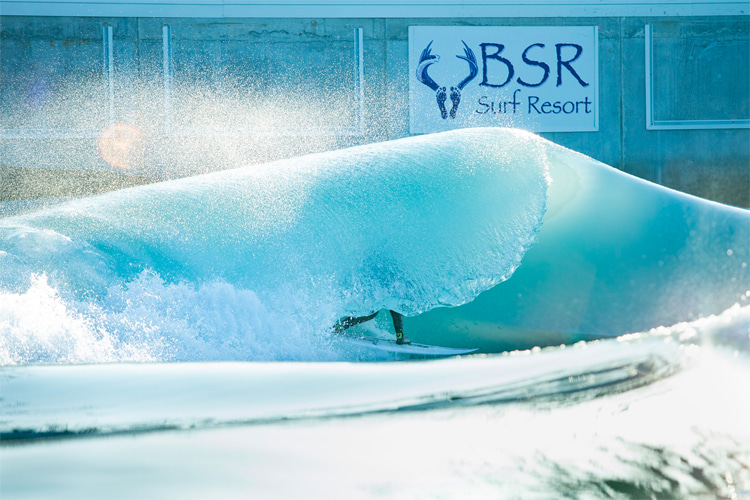
American Wave Machines (AWM) has disrupted the surfing world with their "PerfectSwell" technology.
This innovation involves the application of pressurized air on the water's surface, simulating the intricacies of ocean waves.
The system uses a series of air chambers situated along the bottom of the pool.
These chambers are sequentially filled and emptied with air, pushing water above them and initiating wave formation.
The timing, intensity, and sequence of the air release can be manipulated, which allows for the creation of different wave types.
From small, rolling waves for beginners to larger, barreling waves for professionals, AWM's technology brings an adaptable ocean to any landlocked location.
3. Hydrofoil/Plow | Kelly Slater Wave Co.
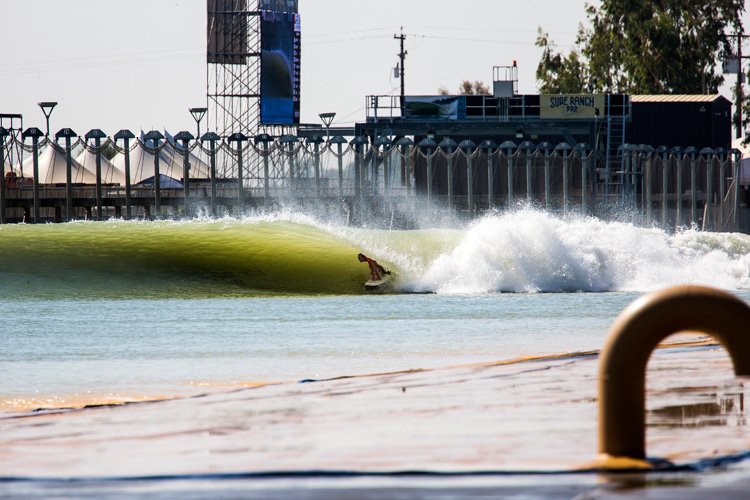
Founded by the legendary surfer, the Kelly Slater Wave Company (KSWC) employs a different approach, favoring a hydrofoil or plow technology.
This technique involves towing a large, submerged foil along the bottom of the pool, which displaces water and generates a continuous wave that breaks along the basin's specially designed bathymetry.
The foil, shaped like a snowplow, is driven through the pool by a cable system.
As it moves, it pushes water to either side, creating a wave that peels perfectly along the pool's edge.
This creates long, bi-directional, rideable waves - lefts and rights - mimicking some of the world's best surf breaks.
4. Plunger | Surf Lakes
Australian company Surf Lakes adopts a plunger technology for their wave pool.
The system features a large central plunger that displaces water when dropped, similar to a toilet bowl.
The subsequent rebound causes the creation of concentric wave circles, which then break upon strategically placed reefs and bays around the pool.
The unique aspect of Surf Lakes' technology is its capacity to produce multiple wave types simultaneously.
As the waves spread out and break upon different topographical features, they can create up to eight different surfing zones, accommodating various skill levels.
5. Water Dumping | Murphy's Waves
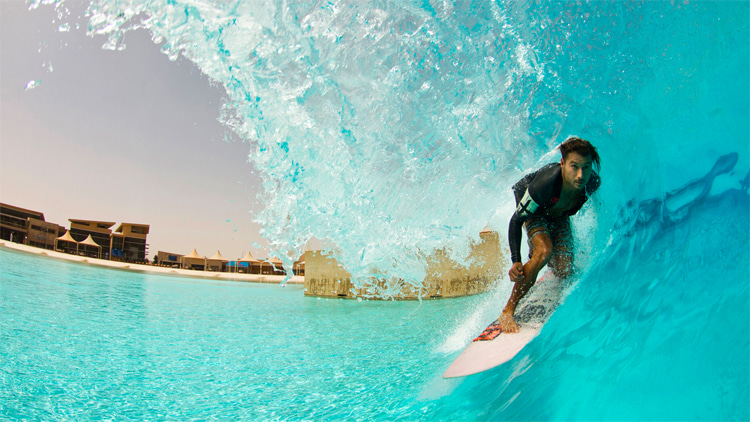
Scotland's Murphy's Waves introduces a novel concept: water dumping. This method involves hoarding a large volume of water in a chamber at one end of the pool, then releasing it suddenly to create a wave.
This technique can generate breaking waves that are ideal for bodyboarding and surfing.
So, instead of pushing on the water with air or a paddle, the wave machine dumps a massive volume of water into the deep end of the pool.
The surge in water travels all the way to the beach; the water level in the pool balances out again.
Since water is fairly heavy, it pushes very hard to find its own level. If more water is dumped in, it increases the size and strength of the wave.
One of the remarkable features of this technology is the "Point Break Surf" wave system, where water is released into a specially designed channel to generate a peeling wave that gives a long, thrilling ride.
6. Rotating Foils | Okahina Wave
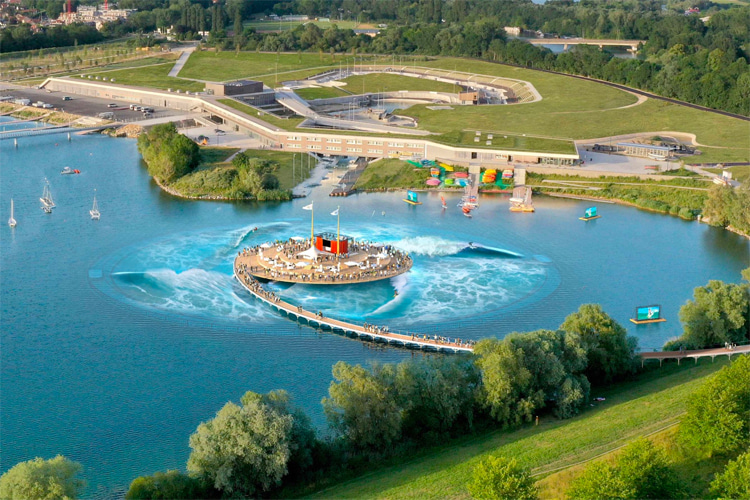
French company Okahina Wave takes an eco-conscious approach with its rotating foil system.
In this configuration, a floating atoll houses a central foil that rotates, displacing water to form a series of waves around the perimeter.
The unique design of Okahina Wave's system makes it a standout.
Not only does it generate waves, but the floating atoll also filters and purifies water, minimizes energy use, and provides a habitat for marine life.
